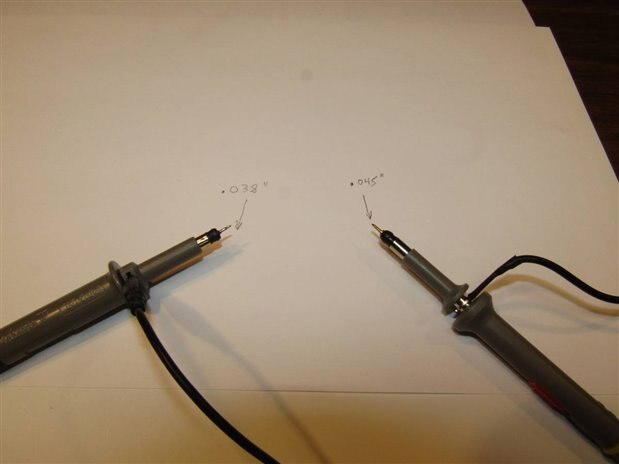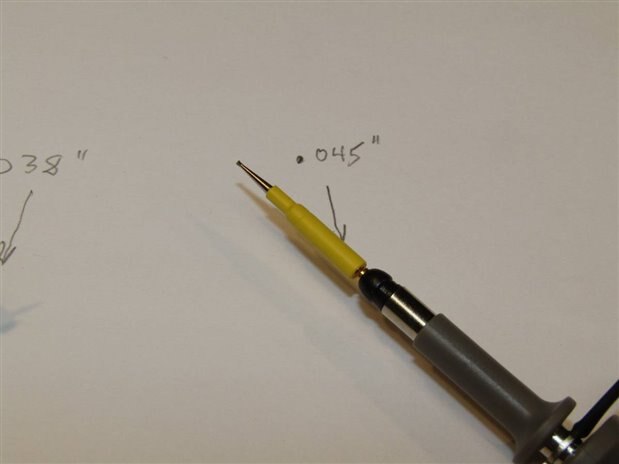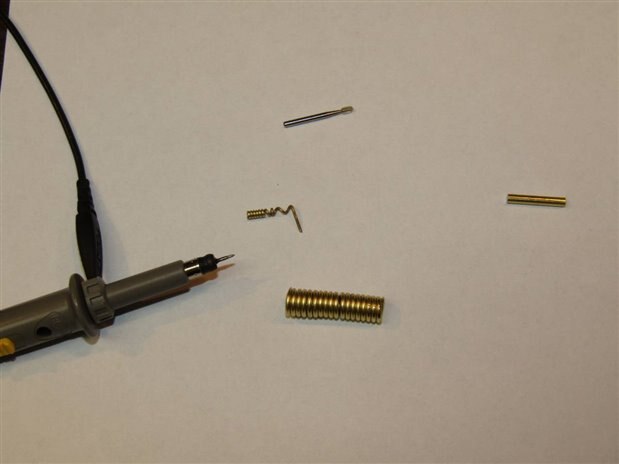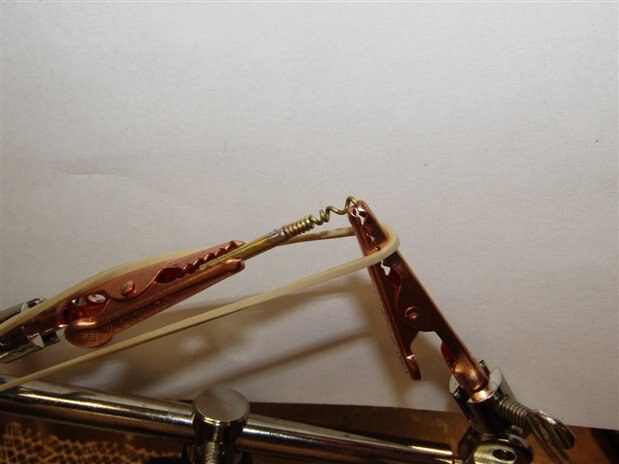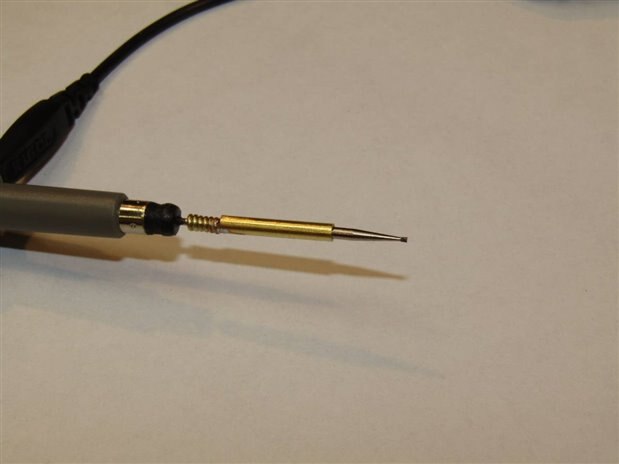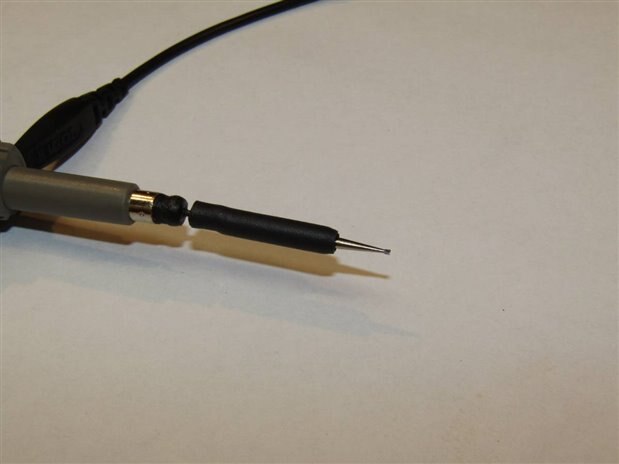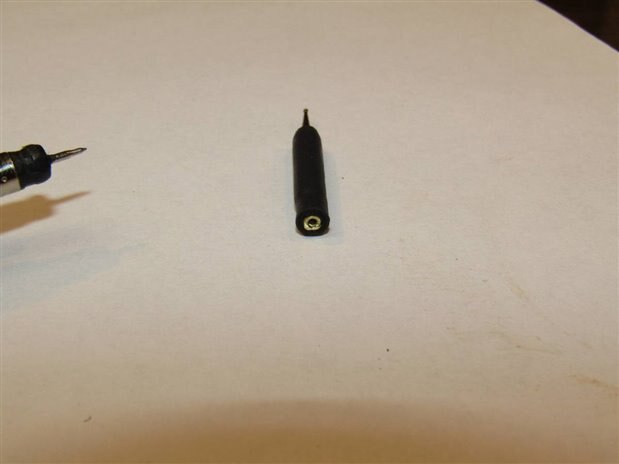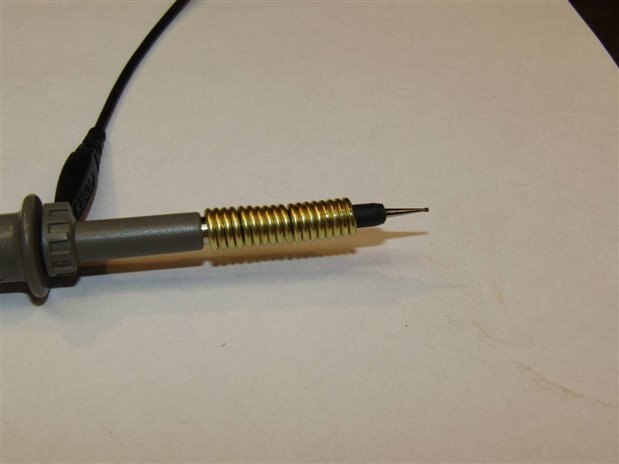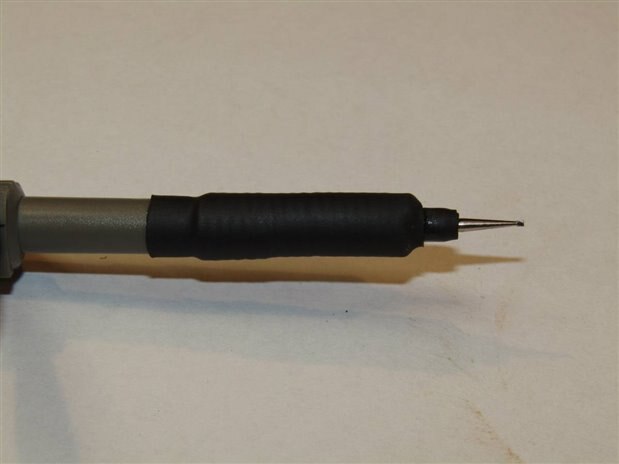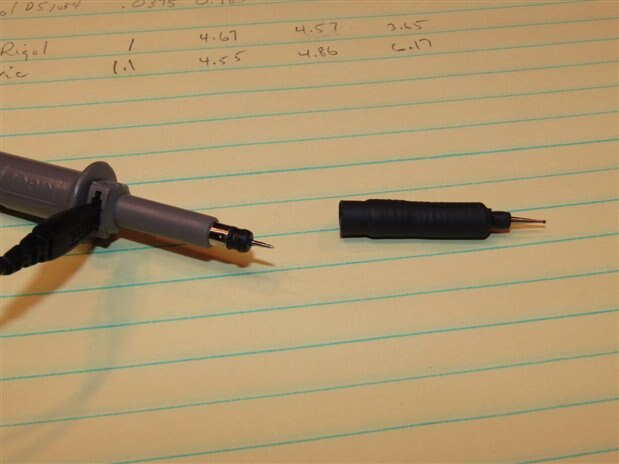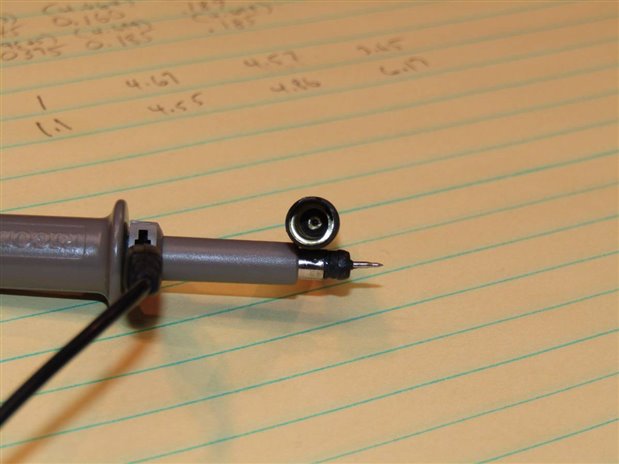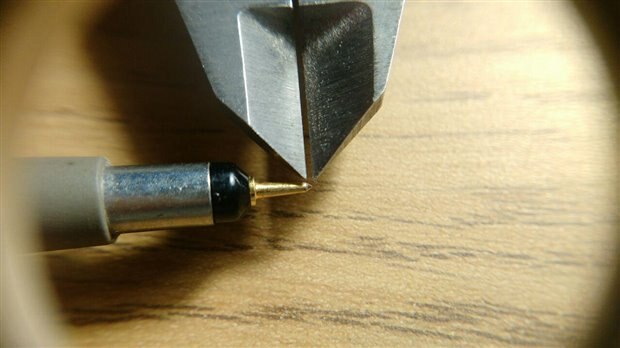I need some help collecting data about Oscilloscope Probes. I am thinking of making some low frequency Non-Slip probe tip adapters for Oscilloscope probes. With the limited number of Oscilloscope probes with in my reach it does not look like there is any standardization.
As you can see the two probes that I own each have different diameter probe tips. It would help me plan my project if I could find out what the diameter and length of oscilloscope probes from as many of you as possible. Please measure length of the consistent diameter of the tip and also the diameter itself. I can accept measurement in inches or millimeters. Here is what I hope to be able to build without having to custom make each one.
Your help would be appreciated.
John

